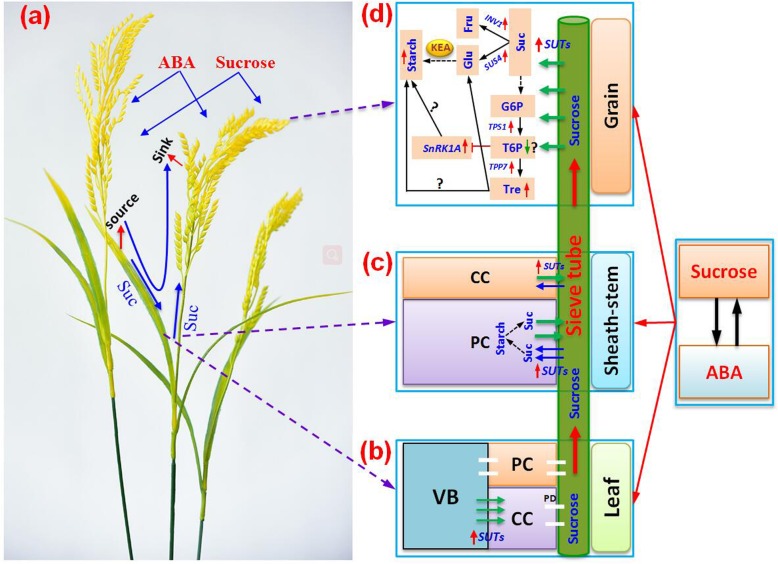Fig. 10.
Descriptive model of the crosstalk between sucrose and abscisic acid (ABA) functions in the source-sink relationship of rice plants. ABA synergized with sucrose, which significantly improved the source-sink relationship of rice plants. In this process, the sucrose transporters (SUTs) genes, SUT1 and SUT2, were induced by ABA plus sucrose in leaves, which were mainly responsible for sucrose loading from the vascular bundles (VB) to the companion cells (CC) of leaves, and then transported to the sheaths and panicles through the plasmodesma (PD); sucrose in sheath-stems was unloaded by SUTs and stored in the CC or parenchymatous cells (PC) in the form of starch, while it was more loaded and transported to the grains through the sieve tubes by ABA plus sucrose in this study. In grains, the synergy between ABA and sucrose significantly increased starch content by enhancing the expression of invertase1 (INV1) and sucrose synthase4 (SUS4) as well as the key enzyme activity (KEA) of grain filling. Additionally, trehalose-6-phosphate (T6P) content was deduced to decrease in response to ABA plus sucrose as a greater increase in gene expression of trehalose-6-phosphate phosphatase7 (TPP7) than trehalose-6-phosphate synthase1 (TPS1), and an increase in sucrose non-fermenting related protein kinase 1A (SnRK1A) expression. Thus, trehalose content increased and trehalose metabolism was improved by ABA plus sucrose to regulate starch synthesis and assimilate allocation, where T6P and SnRK1A were the main mediators. Fru, fructose; Glu, glucose; G6P, glucose-6-phosphate; Suc, sucrose; Tre, trehalose; the arrows ‘→’ and “” indicate direct and indirect induction in D, while ‘┤’ indicates inhibition

